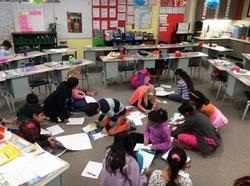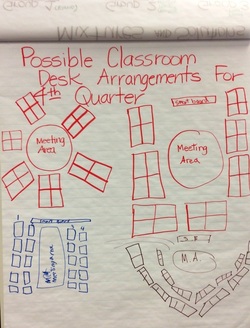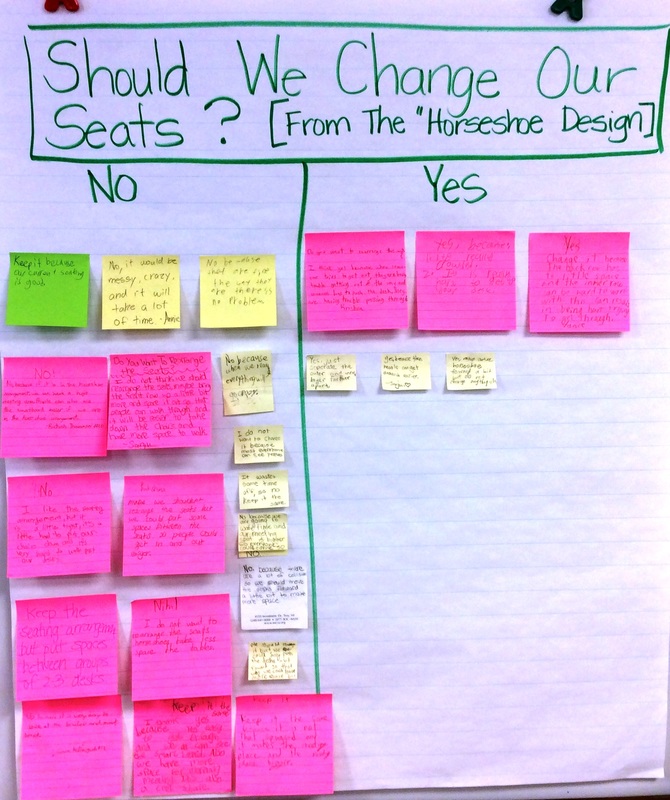Creating Opportunities for Thinking and Understanding in the Classroom
In my mind, the cultural force of opportunities was something that takes care of itself. If teachers use routines and structures for thinking, use the language of thinking, develop interactions and relationships that encourage, expect and accept all thinking and ideas, then opportunities are being provided that allow for thinking and understanding. In his new book, Creating Cultures of Thinking, Ron Ritchhart took my thinking about opportunities in new and more pro-active directions.
This chapter suggests, among other things, that complexity of tasks elevates opportunities for engagement and learning in a meaningful way. One way that these types of opportunities are created might be when teaching and curricular teams make a commitment to look closely at units of study within the curriculum and replace the "low-level" tasks that are embedded in instructional units with purposeful and connected activities, projects and events that weave throughout the unit of study. These types of changes have the potential for providing opportunities for thinking and understanding that go beyond the surface and sustain concept development. For more information on essential elements of project design, visit:
This chapter suggests, among other things, that complexity of tasks elevates opportunities for engagement and learning in a meaningful way. One way that these types of opportunities are created might be when teaching and curricular teams make a commitment to look closely at units of study within the curriculum and replace the "low-level" tasks that are embedded in instructional units with purposeful and connected activities, projects and events that weave throughout the unit of study. These types of changes have the potential for providing opportunities for thinking and understanding that go beyond the surface and sustain concept development. For more information on essential elements of project design, visit:
Gold Standard PBL: Essential Project Design Elements | Blog | Project Based Learning | BIE
Physical Environment Creates Learning Opportunities

I recently walked into a classroom and was surprised to see the desks arranged in two semi-circles, amphitheater style. This was unexpected because, in the spirit of collaboration and relationship building, the majority of seating arrangements in elementary school are table-like clusters with students facing one another. It occurred to me, however, that this arrangement might present many more opportunities for collaborative thinking and learning. My thinking was reinforced when I saw students highly engaged in learning together within the expansive floor space created by this new arrangement.
The classroom teacher told me that this arrangement was the end product of a wide ranging discussion that allowed many voices to be heard about pros and cons of the old arrangement and possible new arrangements
The classroom teacher told me that this arrangement was the end product of a wide ranging discussion that allowed many voices to be heard about pros and cons of the old arrangement and possible new arrangements

The group thought table clusters were not best for learning because some students always had their back to the Smart Board and the teacher/speaker. They also wanted more floor space to spread out when working in small groups. In this arrangement, it seemed to them it would be easy to turn desks around to create a face to face arrangement if needed.
After the class had lived and learned within the new space for a period of time, the decision was revisited with a Tug of War. Overwhelmingly, students liked the opportunities for learning and collaborating in the new space.
Thinking about your own classroom, would this arrangement present new thinking, learning and collaborating opportunities to your students?
After the class had lived and learned within the new space for a period of time, the decision was revisited with a Tug of War. Overwhelmingly, students liked the opportunities for learning and collaborating in the new space.
Thinking about your own classroom, would this arrangement present new thinking, learning and collaborating opportunities to your students?
Language of the Classroom
Click on the links to the right to access these resources for the cultural force of language.
|
|
| ||||||

